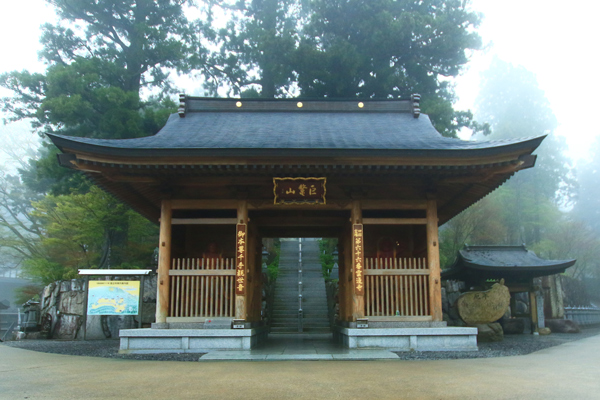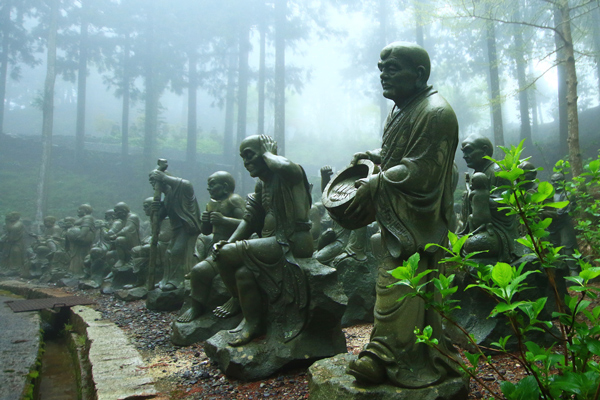The Shikoku Pilgrimage Temple Guide
Temple 66, Unpenji

History of the temple
Unpenji Temple has the highest elevation in the Shikoku Pilgrimage. It is located near the summit of the Shikoku Mountain Range and the trail up to the temple is known as a henro korogashi, literally meaning pilgrims tumbling down. This refers to steep sections where it is easy to slip and fall. Today a ropeway can be taken from partway up the mountain to the summit station and the temple. The address is in Tokushima Prefecture, but as a sacred site, it is the first temple in Sanuki (Kagawa) and a sekisho (checkpoint).
According to legend, Kobo Daishi visited Unpenji three times. The first time was in 789, when he was 16 years old. He came to seek building materials for temple 75, Zentsūji, but was moved by this sacred mountain and built a temple here. This was the original Unpenji. In 807, when he was 34 years old, he performed a ritual using treasures brought back from China. In 818, when he was 45 years old, he visited the temple by order of Emperor Saga (reigned 809-823). He carved the principal image and placed some śarīra (physical remains of Shakyamuni, the Historical Buddha) and the Hiro Shada Hoin (Great Illuminator Stone) in the mountain as offerings to the seven Buddhas, and designated it as part of the Shikoku Pilgrimage.
The temple is commonly called Shikoku-bo. It became a place of study and training for monks who traveled from all over Shikoku, and prospered under the name Shikoku Koya. In the Jogan era (859-877), the temple was also an imperial temple of Emperor Seiwa (reigned 858-876). During the Kamakura period (1185-1333), seven major temple buildings were constructed, and the temple had 12 monk’s cells and eight branch temples within its precincts. It was also a checkpoint for Awa, Iyo, and Sanuki (Tokushima, Ehime and Kagawa). During the Tensho era (1573-1592), Chosokabe Motochika, a powerful Tosa (Kochi) samurai, stayed at Hakuchi Castle in this area and visited Unpenji. He tried to conquer Shikoku, but was admonished by the head priest. Although the temple went through ups and downs, in the Edo period (1603-1868) it received the protection of Lord Hachisuka, the Lord of the Awa. Surrounded by thousand-year-old cedars and shrouded in clouds, the temple continues to pass on the teachings of Buddha.
Highlights
Gohyaku Rakan (Five Hundred Arhats)
Five hundred life-size statues of arhats, Buddha's disciples, stand throughout the temple grounds, welcoming visitors.
National Important Cultural Property
The principal image, a seated statue of Senju Kannon, as well as a statue of Fudo Myōō, a standing statue of Bishamonten, and a painting of the Buddha's visit to the temple, are all designated as National Important Cultural Properties.
Otanomi Nasu
A sitting area in a secluded corner of the temple grounds
Bishamonten Observation Hall
You can enjoy a 360-degree view from Mt. Unpenji

Details
Names: Kyōgozan, Sennjuin, Unpenji
Denomination: Shingon sect, Omuro school
Principal Image: Senju Kannon Bosatsu
Founder: Kobo Daishi
Founded: 789
Access
Address: 763, Hakuchi-Norouchi, Ikeda-cho, Miyoshi City Tokushima 778-5251
Phone: 0883-74-0066
Parking: Available
Lodging: None
Official website: None
Facebook: 四国霊場第66番札所 巨鼇山 雲辺寺 千手院 unpenji
